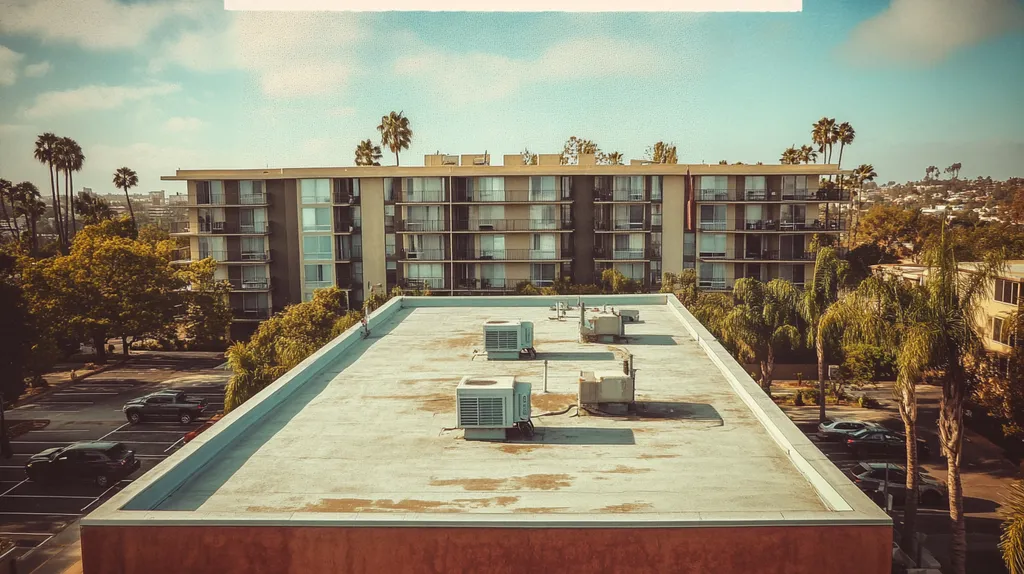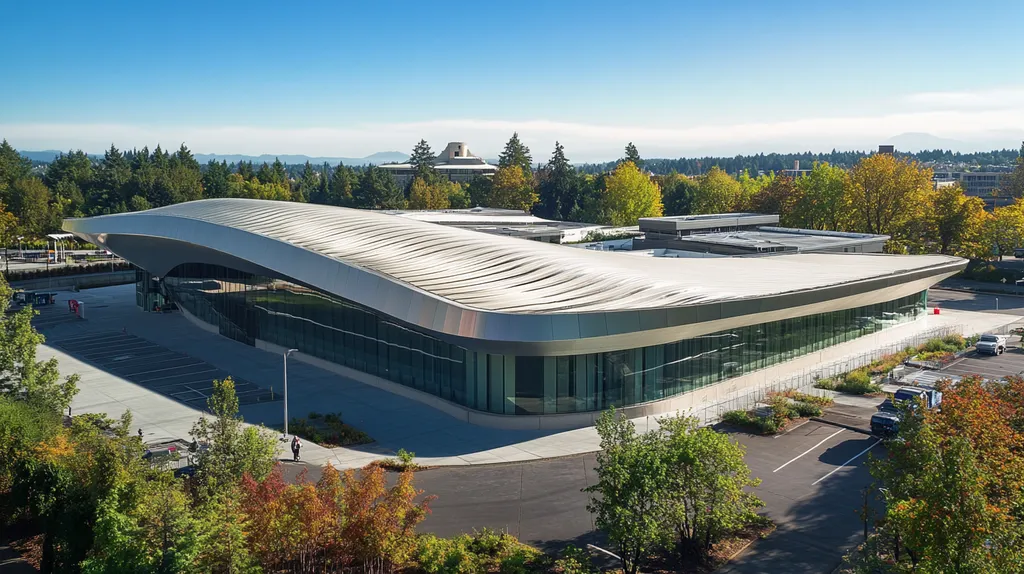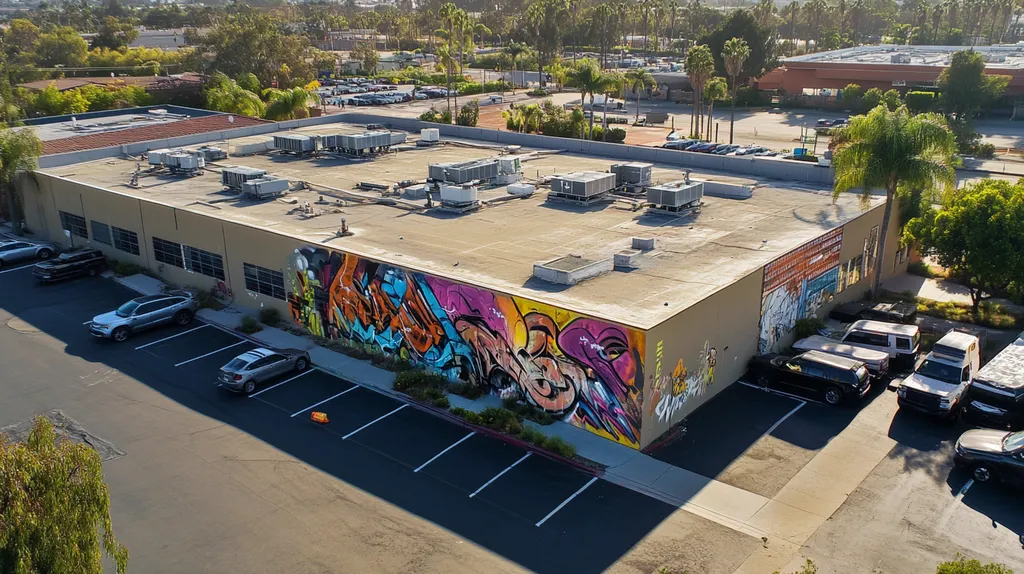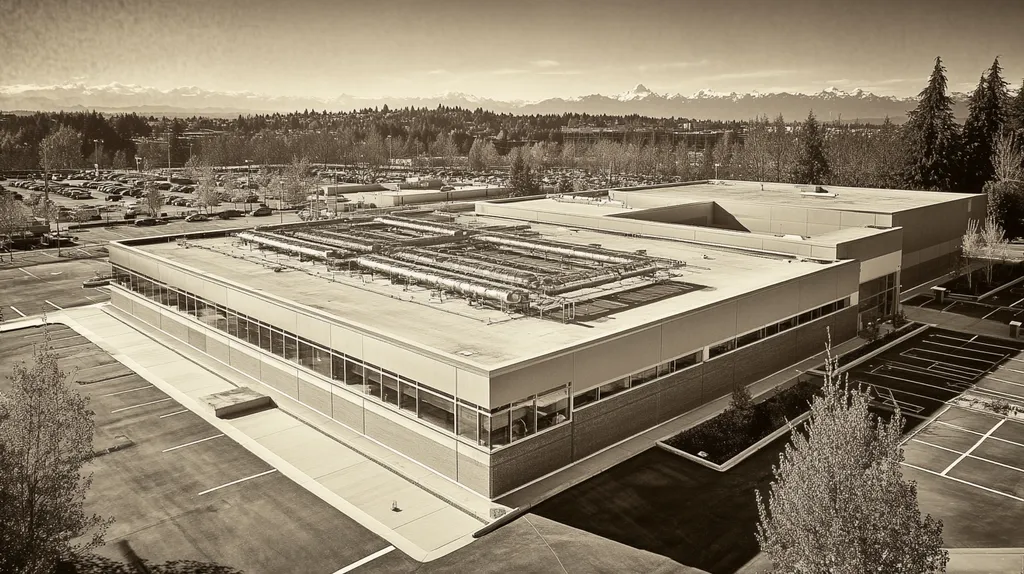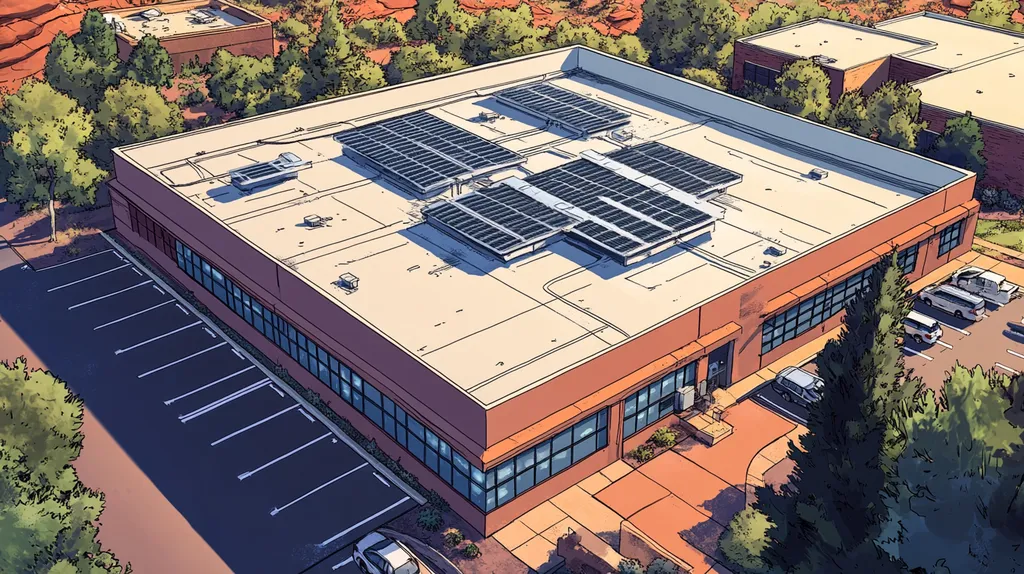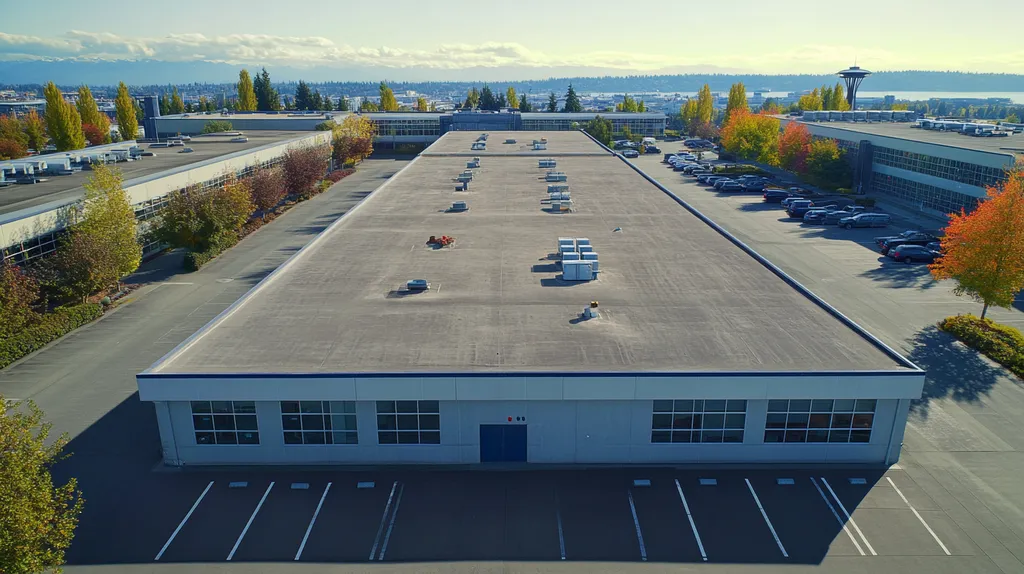Welcome to today’s Battle Royale featuring two roofing heavyweights: “Silicone Roof Coatings” in the east corner versus “Polyurethane Roof Coatings” in the west!
Tonight’s showdown pits these contenders against each other across six punishing rounds designed to test every aspect of their performance for Aging Infrastructure Commercial Roof Coating.
At stake? Millions in potential costs, decades of building protection, and the critical performance demands of modern commercial and industrial facilities.
Our professional judging panel will evaluate each round on technical merit, real-world performance, and value delivery. After all six rounds, we’ll declare our ultimate champion.
Ladies and gentlemen, facility managers and building owners… it’s time to rumble!
ROUND 1: INITIAL COSTS & INSTALLATION
In today’s challenging economic climate, aging commercial roofs present a critical infrastructure challenge. With material costs rising and labor shortages affecting project timelines, selecting the right roof coating has become more crucial than ever. Industry data shows that delayed roof maintenance can increase repair costs by up to 25% annually, making the initial investment and installation decisions particularly significant.
Material Expenses
Material costs represent a significant portion of any commercial roofing project’s budget. Current market analysis shows silicone roof coatings typically command higher upfront costs, ranging from $2-4 per square foot for materials alone.
Polyurethane coatings generally cost less initially, averaging $1.50-3 per square foot. However, their need for multiple layers and primers can increase total material requirements.
Silicone coatings contain solvents that emit low levels of VOCs, yet their superior weather resistance and single-coat application often justify the higher initial investment. (source: Castagra)
Given the long-term durability and reduced material requirements, polyurethane gains an “ADVANTAGE” in material expenses.
Installation Complexity
Installation efficiency directly impacts project costs and facility disruption. Silicone coatings typically require minimal surface preparation and can often be applied in a single coat, reducing labor hours and complexity.
Polyurethane systems demand more extensive surface preparation, including thorough cleaning and priming. Multiple coats are usually necessary, increasing both labor requirements and the potential for application errors.
The simpler application process of silicone coatings reduces the risk of installation defects and accelerates project completion. This gives silicone coatings a clear “ADVANTAGE” in installation complexity.
Project Timeline
Time efficiency in commercial roofing projects directly affects business operations and tenant satisfaction. Silicone coatings typically require just 24-48 hours for full curing, allowing for rapid return to service.
Polyurethane installations demand longer project timelines due to multiple coating layers. Each layer requires proper curing time, extending the overall installation schedule by several days.
Weather sensitivity during application also favors silicone coatings, as they can be applied in a broader range of conditions. This timeline efficiency gives silicone coatings an “ADVANTAGE” in project completion.
ROUND 1 WINNER: Silicone Roof Coatings
ROUND 2: DURABILITY & LIFESPAN
In today’s commercial real estate landscape, aging roofs represent a critical infrastructure challenge affecting over 5.6 million commercial buildings in the United States. With weather patterns becoming more extreme and maintenance costs rising sharply, the durability of roof coatings has become a paramount concern for facility managers.
Weather Resistance and UV Stability
Silicone roof coatings excel in UV resistance, maintaining their protective properties even after decades of sun exposure. Their molecular structure remains stable under intense solar radiation, preventing degradation and chalking common to other coating types.
The material’s natural resistance to oxidation and thermal shock allows it to maintain flexibility through extreme temperature cycles. This characteristic is particularly valuable for aging roofs that may have existing stress points or structural movement.
Polyurethane coatings offer good UV protection initially but can show signs of degradation over time. While they maintain color stability better than silicone, their chemical structure may break down faster under prolonged UV exposure.
For weather resistance and UV stability, silicone coatings gain a clear “ADVANTAGE” due to their superior long-term performance under solar exposure.
Impact and Abrasion Resistance
Polyurethane coatings demonstrate exceptional resistance to physical impacts and foot traffic. Their dense molecular structure creates a tough, durable surface that withstands mechanical stress without compromising the coating’s integrity.
These coatings particularly excel in environments requiring frequent maintenance access or areas with potential falling debris. The material’s inherent toughness provides superior protection against punctures and tears.
Silicone coatings, while durable, show less resistance to physical abuse. Their softer surface can be more susceptible to damage from maintenance traffic and may require additional protection in high-traffic areas.
Polyurethane coatings earn an “ADVANTAGE” in this category due to superior mechanical durability.
Long-term Performance on Aging Infrastructure
When applied to aging infrastructure, silicone coatings demonstrate remarkable adaptability to existing roof conditions. Their superior moisture resistance and ability to maintain flexibility even in standing water make them ideal for older roofs with drainage issues.
These coatings can bridge small cracks and continue to protect even as the substrate moves with age. Their ability to maintain adhesion in harsh conditions provides reliable long-term protection for deteriorating roofing systems.
Polyurethane systems, while initially robust, may become brittle over time and show reduced flexibility. This characteristic can be particularly problematic on aging roofs where movement and settling are common issues.
For long-term performance on aging infrastructure, silicone coatings gain an “ADVANTAGE” due to their superior flexibility and moisture resistance.
ROUND 2 WINNER: SILICONE ROOF COATINGS
ROUND 3: PERFORMANCE FACTORS
With over 75% of commercial roofs experiencing premature failure due to poor coating selection, performance factors have become critical for facility managers. Recent studies indicate that inadequate coating choices can reduce a roof’s functional lifespan by up to 40% while increasing energy costs by thousands annually. Understanding how different coatings perform under real-world conditions is essential for protecting aging infrastructure investments.
Durability
Durability represents a coating’s ability to maintain its protective properties over time, directly impacting maintenance costs and replacement intervals. This factor becomes especially crucial for aging roofs where substrate movement and settling are common.
Silicone coatings maintain exceptional flexibility throughout their service life, allowing them to accommodate building movement and thermal expansion. Their resistance to ponding water and ability to maintain adhesion even in harsh conditions makes them particularly valuable for aging structures.
Polyurethane coatings initially demonstrate excellent durability but can become brittle with age. While they resist mechanical damage well, their decreasing flexibility over time can lead to cracking and separation, especially on older roofs experiencing structural movement.
Given their superior long-term flexibility and moisture resistance, silicone coatings earn the “ADVANTAGE” in durability.
Weather Resistance
Weather resistance directly affects a coating’s ability to protect the underlying structure from moisture intrusion and environmental damage. This capability becomes increasingly important as climate patterns become more extreme.
Silicone coatings excel in maintaining their protective properties across a wide range of temperatures and weather conditions. Their molecular structure remains stable even when exposed to prolonged periods of rain, snow, or extreme temperature fluctuations.
Polyurethane coatings provide good initial weather protection but can degrade more quickly under severe conditions. Their performance in areas with frequent precipitation or temperature extremes often requires more frequent maintenance or reapplication.
Silicone coatings demonstrate clear “ADVANTAGE” in weather resistance through superior environmental adaptability.
UV Protection
UV protection capabilities significantly impact both coating longevity and building energy efficiency. As global temperatures rise, this factor becomes increasingly critical for commercial property operations.
Silicone coatings deliver exceptional UV resistance without compromising their physical properties. Their ability to maintain reflectivity and resist degradation under intense solar exposure helps reduce cooling costs while extending service life.
While polyurethane coatings provide initial UV protection, they typically show faster degradation and loss of reflective properties when exposed to prolonged sunlight. This deterioration can lead to increased energy costs and accelerated aging of the coating system.
The superior UV stability of silicone coatings earns them the “ADVANTAGE” in this category.
ROUND 3 WINNER: SILICONE ROOF COATINGS
ROUND 4: MAINTENANCE REQUIREMENTS
Maintenance demands on aging commercial roofs have reached critical levels, with deferred upkeep causing over $3.3 billion in annual repair costs across the United States. With 60% of commercial buildings now over 20 years old, selecting a coating system with optimal maintenance characteristics has become essential for protecting infrastructure investments and controlling long-term expenses.
Routine Inspection Requirements
Silicone coatings demonstrate remarkable resilience, typically requiring only annual inspections to maintain warranty compliance. Their stable chemical structure and resistance to environmental degradation minimize the need for frequent professional assessments.
The coating’s self-cleaning properties and resistance to dirt accumulation further reduce inspection frequency. When issues are found, they tend to be localized and easily addressable without extensive intervention.
Polyurethane systems demand more rigorous inspection schedules, often requiring quarterly evaluations to monitor coating integrity. Their susceptibility to UV degradation and mechanical wear necessitates vigilant oversight to prevent system failure.
Based on reduced inspection requirements, silicone coatings earn an “ADVANTAGE” in this category.
Cleaning and Preventive Care
Silicone coatings maintain their protective properties with minimal cleaning intervention. Their smooth surface texture naturally resists dirt adhesion and biological growth, requiring only basic annual cleaning to maintain optimal performance.
These coatings can typically be cleaned using standard low-pressure washing techniques, without the need for harsh chemicals or specialized equipment. Their resistance to oxidation and chalking helps maintain reflectivity with minimal maintenance.
Polyurethane coatings require more frequent cleaning to prevent surface degradation and maintain reflective properties. Their textured finish can trap contaminants, demanding more intensive cleaning protocols and specialized solutions.
The lower cleaning demands of silicone coatings provide a clear “ADVANTAGE” in preventive care requirements.
Repair and Recoating Needs
Silicone coating repairs can typically be accomplished with simple cleaning and reapplication over the affected area. The material’s excellent adhesion to itself, even years after initial application, facilitates straightforward spot repairs.
When recoating becomes necessary, silicone systems can often be refreshed with a single new layer, maintaining their protective properties without complete removal. This characteristic significantly reduces the complexity and cost of long-term maintenance.
Polyurethane systems often require more extensive preparation for repairs, including mechanical abrasion and primer application. Their tendency to become brittle over time can complicate spot repairs and may necessitate larger section replacements.
For repair and recoating requirements, silicone coatings demonstrate a clear “ADVANTAGE” in this category.
ROUND 4 WINNER: Silicone Roof Coatings
ROUND 5: SUSTAINABILITY CREDENTIALS
With over 40% of commercial buildings now targeting net-zero emissions by 2030, sustainable roofing choices have become a critical infrastructure priority. Recent environmental regulations and ESG requirements are reshaping how facility managers approach roof coating selections. The impact of these decisions extends far beyond individual buildings to affect community health and environmental resilience.
Environmental Impact
Before selecting a commercial roof coating, property managers must evaluate both immediate and long-term environmental impacts. The condition of the existing roof structure, local climate patterns, and coating purpose all play crucial roles in determining sustainability outcomes. (source: Inland Coatings)
Silicone roof coatings offer superior solar reflectance properties, reducing cooling loads by up to 35% in warm climates. Their low VOC emissions during application and minimal environmental impact during production make them increasingly attractive for green building initiatives.
Polyurethane coatings, while durable, require more energy-intensive manufacturing processes. Their application often involves higher VOC emissions and requires more frequent recoating, increasing their lifetime environmental footprint.
Given their lower environmental impact and superior reflective properties, silicone coatings earn an “ADVANTAGE” in this category.
Longevity and Waste Reduction
Sustainable roofing solutions must demonstrate exceptional longevity to minimize construction waste and resource consumption. Modern coating systems play a crucial role in extending roof lifespans and reducing landfill impact.
Silicone coatings typically last 15-20 years with minimal degradation, often allowing for direct recoating without removal. This characteristic significantly reduces construction waste and extends the functional life of existing roof systems.
Polyurethane systems generally require complete removal and replacement at the end of their service life. Their tendency to become brittle over time often leads to more frequent repairs and increased waste generation.
Based on superior longevity and waste reduction potential, silicone coatings gain an “ADVANTAGE” in this category.
Energy Efficiency
Energy efficiency represents a critical factor in sustainable building operations, with roof coatings directly impacting HVAC loads and carbon emissions. Modern coating solutions must deliver measurable reductions in building energy consumption.
Silicone coatings maintain their reflective properties throughout their service life, providing consistent energy savings. Their stable molecular structure resists degradation from UV exposure, ensuring long-term thermal performance.
While polyurethane coatings offer initial energy benefits, their reflective properties often deteriorate more quickly. This degradation can lead to increased cooling costs and higher carbon emissions over time.
The superior long-term energy performance of silicone coatings earns them an “ADVANTAGE” in this category.
ROUND 5 WINNER: SILICONE ROOF COATINGS
ROUND 6: SPECIALIZED APPLICATIONS
With over 65% of commercial roofs requiring specialized coating solutions due to unique environmental challenges, selecting the right system has become critical for infrastructure protection. Recent industry data shows that mismatched coatings in specialized applications lead to premature failures in 40% of cases, resulting in millions in unnecessary repair costs.
Moisture-prone Environments
Chronic moisture exposure represents one of the most challenging conditions for commercial roof coatings, with water damage accounting for over 70% of premature coating failures. The increasing frequency of extreme weather events has made moisture resistance a critical factor in coating selection.
Silicone coatings demonstrate exceptional performance in high-moisture environments, maintaining their protective properties even under constant water exposure. Their molecular structure actively repels water while remaining permeable to vapor, preventing trapped moisture from compromising the roof system.
Polyurethane coatings, while initially water-resistant, can show degradation under prolonged moisture exposure. Their effectiveness diminishes when subjected to ponding water, potentially leading to adhesion failures and coating breakdown.
Given their superior moisture handling capabilities, silicone coatings earn a clear “ADVANTAGE” in this category.
High-Temperature Environments
Considering the materials your roof is made of, as well as its size and slope, becomes especially critical in high-temperature applications where thermal stress can accelerate coating degradation. Proper coating selection must account for both sustained heat exposure and thermal cycling. (source: Inland Coatings)
Silicone coatings maintain their structural integrity and flexibility even under extreme temperature conditions. Their thermal stability prevents cracking and delamination during temperature fluctuations, while their reflective properties help reduce surface temperatures.
Polyurethane coatings can become brittle when exposed to prolonged high temperatures, potentially compromising their protective capabilities. However, they demonstrate good initial heat resistance and maintain color stability better than silicone alternatives.
For high-temperature applications, silicone coatings gain an “ADVANTAGE” through superior thermal stability.
Heavy Traffic Areas
Rooftop areas subject to regular maintenance traffic or equipment servicing require coatings that can withstand consistent physical stress. The impact of foot traffic and mechanical abuse can significantly affect coating longevity and performance.
Polyurethane coatings excel in high-traffic applications, offering superior resistance to punctures, tears, and abrasion. Their harder surface finish maintains integrity even under frequent mechanical stress, reducing the need for repairs and touch-ups.
Silicone coatings typically show less resistance to physical abuse, with their softer surface being more susceptible to damage from foot traffic and maintenance activities. This characteristic often requires additional protective measures in high-traffic areas.
For heavy traffic applications, polyurethane coatings demonstrate a clear “ADVANTAGE” through superior mechanical durability.
ROUND 6 WINNER: SILICONE ROOF COATINGS
AND THE WINNER IS…
After six grueling rounds of technical evaluation, we have our verdict… With a dominating performance across five out of six rounds, SILICONE ROOF COATINGS emerges as our undisputed champion!
This heavyweight contender demonstrated superior strength in critical areas including durability, weather resistance, UV protection, and sustainability. Its ability to maintain flexibility while delivering exceptional moisture resistance proved devastating to the competition.
But don’t count polyurethane coatings out completely! In heavy traffic areas and applications requiring superior impact resistance, this formidable challenger still packs a powerful punch. Its lower initial cost and excellent mechanical durability make it a strong contender for specific building scenarios.
IMPORTANT NOTICE: Every commercial property presents unique challenges based on local climate, existing roof conditions, and specific performance requirements. While this analysis provides general guidance, it cannot account for all variables. Property owners and managers should always consult qualified roofing professionals who can evaluate their specific situation and recommend appropriate solutions.
Ladies and gentlemen, in the high-stakes world of aging infrastructure protection, there’s no substitute for making an informed choice. Because when that final bell rings, the real victory belongs to those who match their building’s specific needs with the right coating’s strengths!
FREQUENTLY ASKED QUESTIONS
Q. What are the initial costs for commercial roof coatings?
A. Silicone roof coatings generally cost more upfront, averaging $2-4 per square foot. In contrast, polyurethane coatings are usually cheaper, ranging from $1.50-3 per square foot. Remember, the initial cost should be weighed against long-term benefits and durability for optimal decision-making.
Q. How durable are silicone roof coatings compared to polyurethane?
A. Silicone roof coatings excel in UV resistance and flexibility, making them highly durable. Polyurethane coatings offer good initial durability but can become brittle and less flexible over time. This factor is crucial in maintaining the integrity of aging roofs and prolonging service life.
Q. Which roof coating performs better under extreme weather conditions?
A. Silicone roof coatings demonstrate superior performance in extreme weather, maintaining protective properties under multiple conditions. Their ability to resist ponding water and maintain flexibility during temperature fluctuations results in better long-term protection than polyurethane coatings, especially in challenged environments.
Q. What are the maintenance requirements for commercial roof coatings?
A. Silicone coatings typically require annual inspections, while polyurethane systems often need quarterly evaluations. This distinction can save time and costs associated with frequent maintenance, making silicone coatings a more convenient option for long-term management of aging structures.
Q. How do silicone coatings contribute to sustainability in roofing?
A. Silicone coatings are beneficial for sustainability due to their reflective properties and low VOC emissions. They help reduce energy consumption by lowering cooling loads, thus supporting net-zero targets and minimizing environmental impact throughout their lifecycle compared to polyurethane coatings.
Q. Are silicone coatings suitable for moisture-prone environments?
A. Yes, silicone coatings work incredibly well in moisture-prone environments. Their unique molecular structure resists water damage while allowing vapor to escape. This makes them an optimal choice for areas susceptible to constant water exposure or ponding, unlike polyurethane coatings.
Q. How do I choose the right coating for my commercial roof?
A. When choosing a coating, consider factors like environmental conditions, roof age, and required durability. Analyze specific performance characteristics of both silicone and polyurethane coatings to match your roof’s unique challenges. Consulting roofing professionals can also guide better decisions tailored to your building’s needs.

